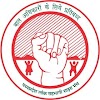Unicef’s latest ‘State of the World’s Children Report—2012’,
Chennai, Mar 12, 2012, DHNS:
Many children in the country live in poor health
Amidst increasing urbanisation and poor nutrition levels, many children in the country have managed to survive in the first decade of the new millennium with under-five mortality (U5MR) rate, a critical indicator to measure children’s wellbeing, dropping.
This disturbing paradoxical achievement marker in child welfare in India has come to light in the Unicef’s latest ‘State of the World’s Children Report—2012’, released here on Monday by the global body. The report was released by the State Planning Commission’s Vice-Chairperson, Santha Sheila Nair.
While the basic thrust of Unicef’s latest report sub-titled ‘Children in an Urban World’, is on siblings of poor parents, living in cities and towns “are excluded from vital services like health, safe water, sanitation, education and nutrition”.
In the global ranking of some 193 countries in the descending order of their respective U5MR rates (the probability of children dying between birth and exactly five years of age which is expressed per 1000 live births), India ranks 46th, thus indicating that the country still has a long wat to go in slashing U5MR in its urban areas.
Though India’s annual average reduction rate in U5MR is up by 2 per cent in 2000-2010 amounting to 3.1 per cent against 2.9 per cent achieved in the previous decade (1990-2000), country’s current status in this vital parameter of child welfare is woefully behind economically smaller neighbouring countries like Nepal (ranked 59th) and Bangladesh (ranked 61st). Only Pakistan has a higher U5MR rate with 87 of that country’s children dying for every 1000 live births.
Despite prolonged ethnic strife Sri Lanka is miles ahead of India’s U5MR rate at just 17 kids in that age-group dying, even beating China whose U5MR is 18 children dying for every 1000 live births, according to the UNICEF report. Somalia tops the global list. The country’s mortality among kids under the age group of five years is the highest at 180 per 1000 births.
In India, the level of under-nutrition in urban areas “continue to be very high”. “At least quarter of urban children under five years were stunted, indicating that they had been under-nourished for some time. Income was a significant factor,” finds the report. Among the urban residents in eight Indian cities surveyed, 54 per cent of its poorest children are “stunted” and 47 per cent remain “underweight”.
Calling for building partnerships with official agencies “in ways that enable young people to play a part in influencing planning, finance and management of urban infrastructure”, the report commended the work of a Bangalore-based NGO, Kilikili, which has encouraged children to be part of the projects to improve cities and make them child-friendly.
पूरी रिपोर्ट यहाँ पर






0 Comments